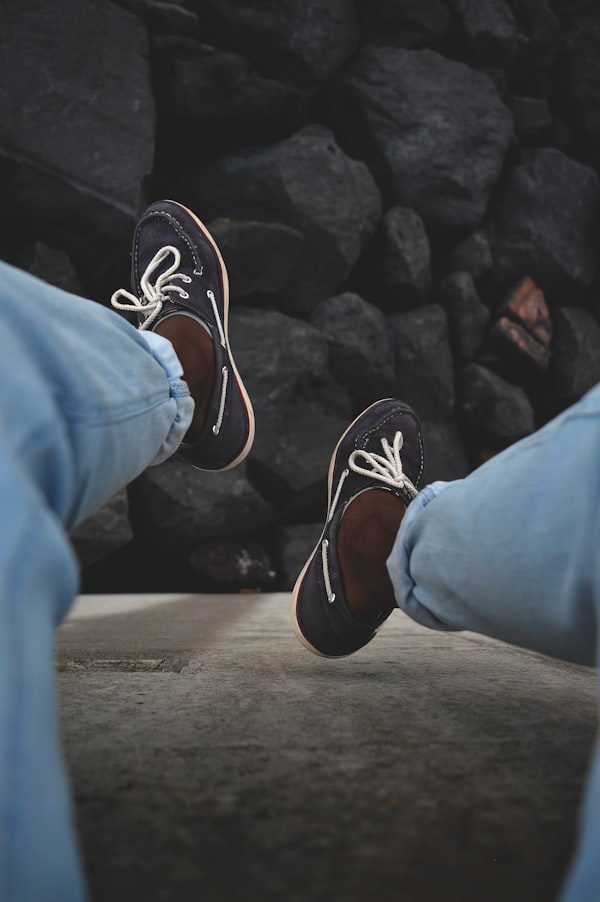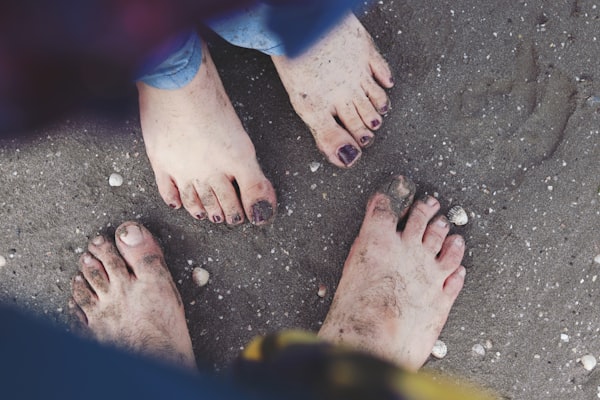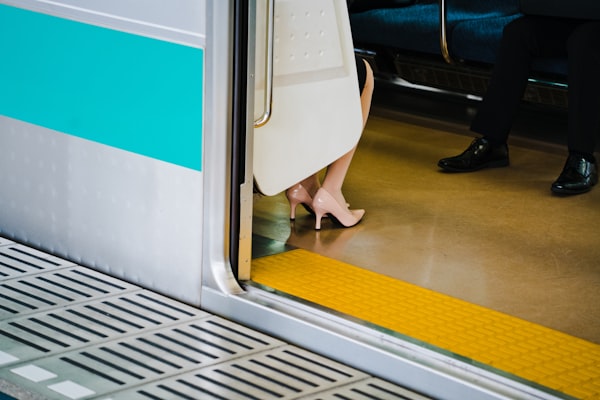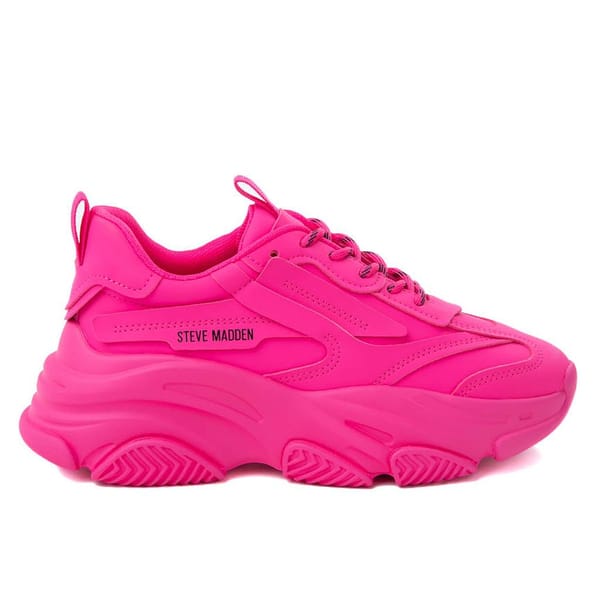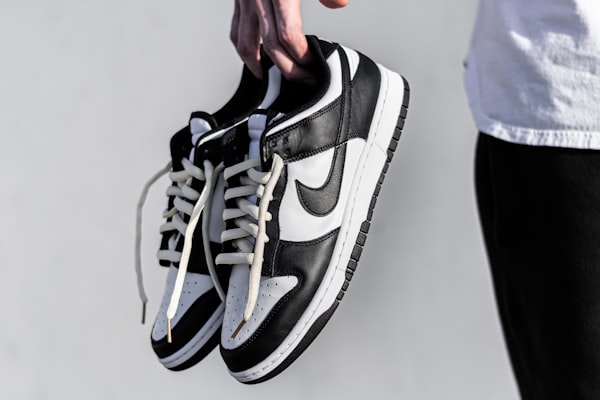Do you dream of dancing through life with the grace of Fred Astaire but find yourself tripping over the tyranny of bunions? Prepare to tip-toe back into comfort and style with our guide on stretching shoes for bunions!
Imagine slipping into your favorite pair of shoes without wincing in pain. You're ready to conquer the day confidently. But bunions, those pesky little troublemakers, seem determined to cramp your style. Fear not! We've got the solution to your shoe-related woes.
You crave the freedom to strut your stuff without sacrificing comfort. From chic pumps to cozy sneakers, the right fit can transform your bunion blues into a symphony of relief and style. No more compromising on fashion or functionality – it's time to reclaim your happy feet!
Get ready to kick discomfort to the curb and step into a world of blissful shoe-stretching solutions. Whether you're strolling through the city streets or dancing the night away, our expert tips will have you sashaying with ease. Say goodbye to bunion pain and hello to happy feet – let's dive in!
Understanding Bunions
Bunions, medically known as hallux valgus, are bony bumps that form at the base of the big toe joint. They develop when the big toe pushes against the adjacent toe, forcing the big toe's joint to enlarge and protrude outward. This often results in a misalignment of the bones in the foot and can lead to discomfort and difficulty with movement.

Individuals with bunions may experience various symptoms, including:
- Pain or tenderness around the big toe joint.
- Swelling or inflammation at the base of the big toe.
- Restricted movement of the big toe.
- Corns or calluses (on or around the bunion).
- Changes in the alignment of the affected toe. These changes cause the toe to point toward the other toes.
The Importance of Properly Fitting Shoes
Wearing ill-fitting shoes can harm foot health, particularly for individuals with bunions. Continuously squeezing bunions into narrow or tight shoes can exacerbate pain, inflammation, and the progression of the deformity.

Moreover, it may lead to other foot conditions such as hammertoes, corns, and calluses. Over time, untreated bunions can even cause structural changes in the foot, affecting gait and overall mobility. Prioritizing correctly fitting shoes is crucial for preventing or alleviating these health complications associated with bunions.
How to Stretch Shoes for Bunions
Now that we've highlighted the importance of properly fitting shoes, you might wonder how to adjust your footwear to accommodate bunions. There are several effective techniques for stretching shoes to accommodate bunions, ranging from DIY solutions to professional assistance. These methods aim to gently expand the material of the shoe, providing extra space and alleviating pressure on the bunion.
Method 1: Use a Shoe Stretcher
- Choose a Shoe Stretcher: Purchase or borrow a shoe stretcher suitable for your shoe's type and size. Ensure that it is designed to accommodate bunions and has adjustable features.
- Prepare the Shoe: Before inserting the shoe stretcher, spray the inside of the shoe with a shoe stretching solution or water to soften the material and make it more pliable.
- Insert the Stretcher: Place the shoe stretcher inside the shoe, positioning it to target the bunion area. Ensure the stretcher is fully inserted and snug against the inner walls of the shoe.
- Adjust the Stretcher: Use the adjustment mechanisms on the stretcher to apply gentle pressure to the areas affected by the bunion. Avoid overstretching the shoe, as this can cause damage to the material.
- Leave in Place: Once the stretcher is adjusted to the desired pressure level, leave it in place for several hours (preferably overnight) to allow the shoe material to stretch gradually.
- Check the Fit: After the designated stretching period, remove the shoe stretcher and try on the shoe to assess the fit. If necessary, repeat the stretching process until you achieve the desired level of comfort and accommodation for your bunion.
- Wear and Test: Once the shoe has been stretched to your satisfaction, wear it for extended periods to ensure it remains comfortable and supportive, especially during activities that may exacerbate bunion pain.
Method 2: Freeze Your Shoes
- Prepare the Shoes: Ensure that your shoes are clean and dry before starting the stretching process. Remove any dirt or debris from the shoes' interior and exterior.
- Fill a Resealable Plastic Bag: Take a resealable plastic bag large enough to fit inside the shoe comfortably. Fill the bag with water, ensuring it's not overly full to allow for expansion when freezing.
- Insert the Bag into the Shoe: Open the shoe and carefully place the filled plastic bag inside, positioning it in the area where the bunion causes discomfort. Make sure the bag is evenly distributed to apply pressure uniformly.
- Shape the Shoe: Manipulate the shoe around the bag to ensure it conforms to the desired shape. This will help to stretch the material evenly and effectively.
- Place the Shoe in the Freezer: Carefully place the shoe into the freezer with the water-filled bag inside. Position the shoe to prevent it from being squished or misshapen by other items in the freezer.
- Allow the Water to Freeze: Leave the shoe in the freezer for several hours or overnight to allow the water inside the bag to freeze completely. As the water freezes, it will expand, gently stretching the material of the shoe.
- Remove the Shoe from the Freezer: Once the water has frozen solid, remove the shoe from the freezer and allow it to thaw at room temperature for a few minutes.
- Check the Fit: Take out the plastic bag and try on the shoe to assess the fit. If necessary, repeat the freezing process with the bag filled with water until you achieve the desired level of stretching and comfort for your bunion.
- Wear and Test: After stretching, wear the shoes for extended periods to ensure they remain comfortable and supportive, especially during activities that may exacerbate bunion pain.
Method 3: Apply Heat
- Identify Tight Areas: Put on the shoes and identify the areas where the material feels tight or the bunion causes discomfort.
- Prepare the Hairdryer: Set the hairdryer to a medium or high heat setting, depending on the material of the shoe. Ensure the hairdryer is in good working condition and positioned near the shoe for easy access.
- Heat the Tight Areas: Hold the hairdryer a few inches away from the tight areas of the shoe, moving it back and forth to distribute the heat evenly. Focus on the areas where the shoe feels snug due to the presence of bunions.
- Test the Heat: Periodically touch the heated areas of the shoe with your hand to gauge the temperature. The material should feel warm to the touch but not uncomfortably hot. Avoid overheating the shoe, as this can cause damage.
- Put on the Shoes: Once the material has been sufficiently heated, immediately put on the shoes while they are still warm. Make sure to wear thick socks or use shoe stretchers to maintain the desired shape and size of the shoe.
- Walk Around: Walk around in the shoes for several minutes to allow the material to stretch and conform to the shape of your foot. Focus on flexing your toes and moving your feet to encourage shoe stretching.
- Cool Down: After wearing the shoes for a few minutes, allow them to cool down naturally at room temperature. Avoid exposing the shoes to extreme temperature changes or placing them near direct heat sources, as this can affect their shape and integrity.
- Check the Fit: Remove the shoes and assess the fit. Repeat the heating process in specific areas until you achieve the desired level of stretching and comfort for your bunions.
- Wear and Test: After stretching, wear the shoes for extended periods to ensure they remain comfortable and supportive, especially during activities that may exacerbate bunion pain.
Method 4: Professional Assistance
You may opt for professional shoe stretching services if you prefer a more hands-off approach or have particularly stubborn shoes. Cobblers and shoe repair shops often offer this service, using specialized equipment and techniques to stretch shoes effectively and safely. While this option may incur an additional cost, it can provide peace of mind, knowing that your shoes are in expert hands.
What if Shoe Stretching Doesn't Work?
Despite best efforts, there may be instances where stretching your shoes doesn't provide the desired relief for your bunions. If your shoes still feel uncomfortable or restrictive after attempting various stretching methods, it may be time to consider investing in a new pair of shoes specifically designed to accommodate your bunions.
To assist you in this endeavor, we have two helpful resources that can guide you through the process:

This article offers valuable insights into selecting footwear that addresses the unique needs of individuals with bunions. From prioritizing wide-toe boxes to seeking out cushioned insoles, you'll learn how to identify bunion-friendly shoes that promote foot health without sacrificing style.

Fitting shoes properly is essential for maximizing comfort and minimizing discomfort caused by bunions. In this article, you'll discover expert tips and techniques for ensuring a proper fit, from measuring your feet accurately to assessing shoe features that accommodate bunions effectively.
Bunion-Friendly Shoe Recommendations
Even armed with all the information we've provided for choosing and fitting shoes for bunions, shopping for footwear can still feel like a daunting task. With countless styles, brands, and features to consider, finding the perfect pair of shoes that not only accommodates your bunions but also suits your personal style can be overwhelming.
To alleviate some of the stress associated with shoe shopping, we've curated a list of our top picks of bunion-friendly shoes. These recommendations have been carefully selected based on their features, comfort, and suitability for individuals with bunions. Whether you need casual sneakers, dressy flats, or supportive sandals, our list covers a variety of styles to suit your preferences and lifestyle.


When Shoes Aren't Enough to Alleviate Symptoms
In cases where conservative treatments fail or when bunions present severe symptoms, surgical intervention may become necessary to correct the deformity and alleviate discomfort. Bunion surgeries aim to realign foot bones, remove excess bone or tissue, and restore optimal joint function.
Following bunion surgery, it's common for feet to be swollen, sore, and tender. Selecting appropriate footwear is crucial for a successful recovery. While traditional post-surgery options like sandals, sneakers, and orthopedic shoes may offer some relief, Crocs has emerged as a surprisingly comfortable choice for many patients. With their cushioned footbeds and wide toe boxes, Crocs can provide the comfort and support needed to alleviate pain and promote healing. For further insights into post-surgery shoe options, explore our recent article on the topic.

On a Final Note
So there you have it- the secret sauce to happy feet! With our tips on stretching shoes for bunions, you can finally bid farewell to those pesky foot woes and hello to a world of comfort and style.
Remember, fashion shouldn't have to hurt, and with some know-how, you can conquer life's catwalks with confidence and flair. Whether stepping out for a night on the town or tackling your daily adventures, your feet deserve the best.
So go ahead, slip into those newly stretched shoes, and dance through life – because when your feet are happy, the world is your runway!
Related Articles





